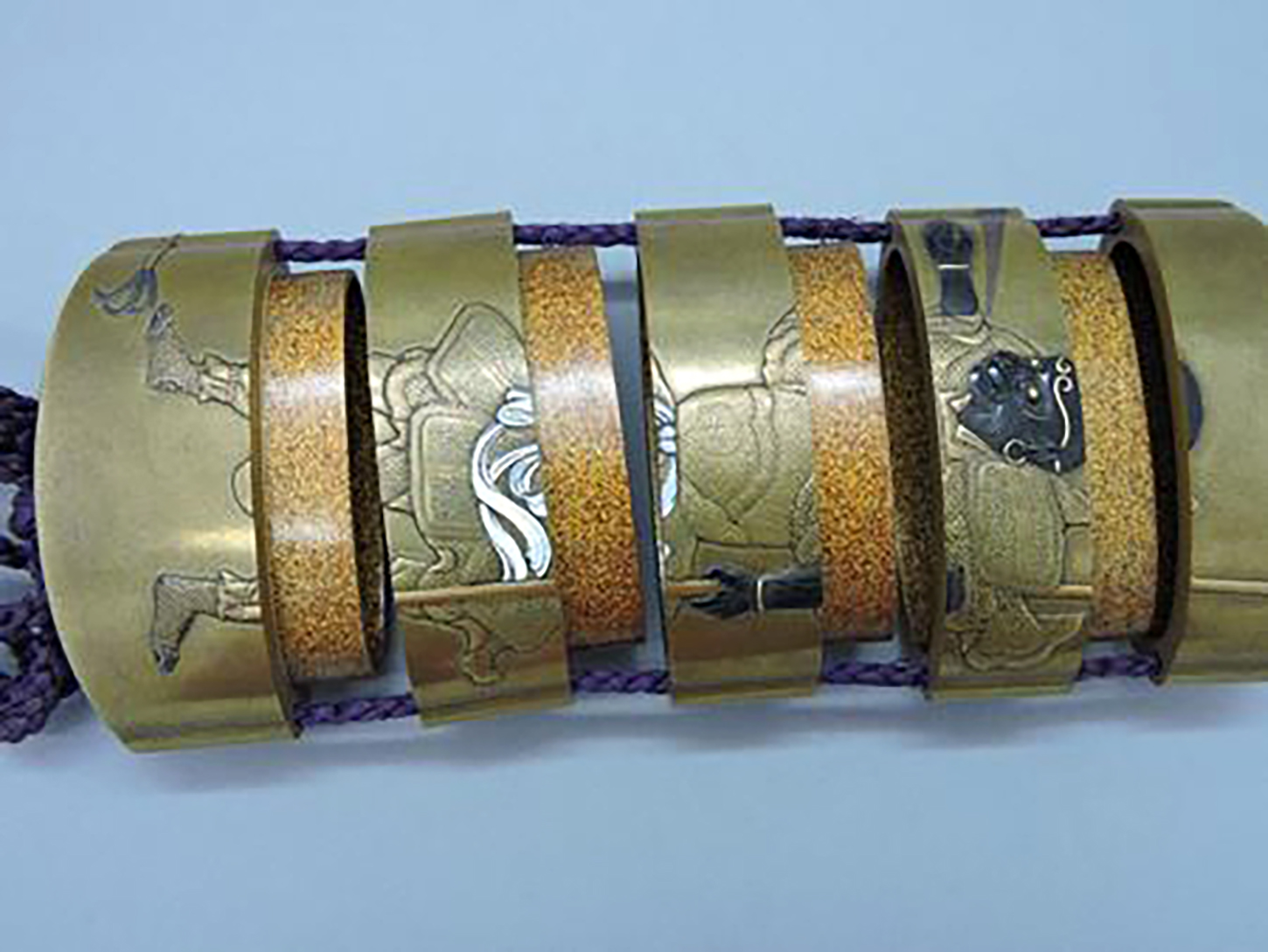INRO
An "Inro" is a traditional Japanese case for holding small objects, suspended from the obi (sash) worn around the waist when wearing a kimono. They are often highly decorated with various materials such as lacquer and various techniques such as maki-e, and are more decorative than other Japanese lacquerware.
Because traditional Japanese dress lacked pockets, objects were often carried by hanging them from the obi in containers known as sagemono (a hanging object attached to a sash). Most sagemono were created for specialized contents, such as tobacco, pipes, writing brush and ink, but the type known as inro is suitable for carrying small things, and was created in the Sengoku period (1467–1615) as a portable identity seal and medicine container for travel.
Description
Consisting of a stack of tiny, nested boxes, inro were most commonly used to carry medicine. The stack of boxes is held together by a cord that is laced through cord runners down one side, under the bottom, and up the opposite side. The ends of the cord are secured to a netsuke, a kind of toggle that is passed between the sash and pants and then hooked over the top of the sash to suspend the inro. An ojime bead is provided on the cords between the inro and netsuke to hold the boxes together. This bead is slid down the two suspension cords to the top of the inro to hold the stack together while the inro is worn, and slid up to the netsuke when the boxes need to be unstacked to access their contents.
Inro are mostly made from paper, wood, metal, or ivory, with the most common material being paper. Paper inro are made by winding and hardening many layers of washi paper with lacquer; paper was a popular material for inro as unlike wood, it would not distort and crack over time.
Text from Wikipedia. Wikipedia® is a registered trademark of the Wikimedia Foundation, Inc.,

